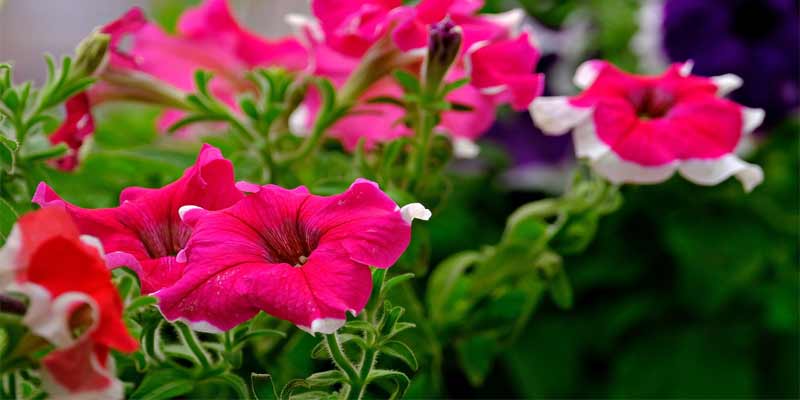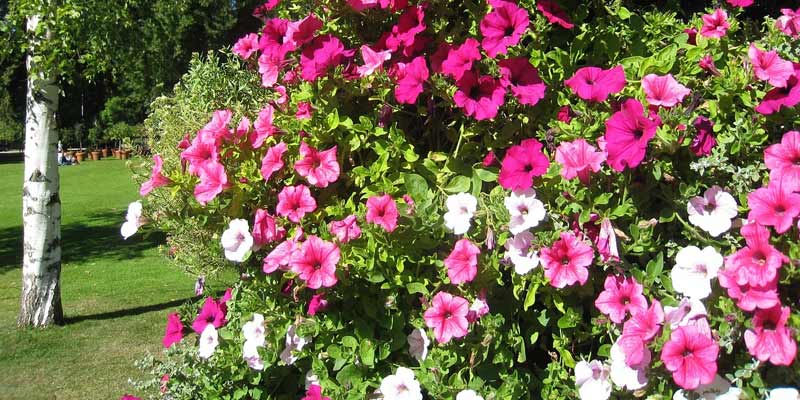Gardeners worldwide adore petunias for their vibrant colors and delicate blooms. These versatile annuals, whether in hanging baskets or flower beds, infuse any landscape with a burst of color and charm. Nonetheless, crucial to the health, vigor, and prolific blooming of petunias throughout the growing season is knowledge about optimal planting times.
Understanding Petunias
To grasp the nature of petunias, we must first explore: they are warm-weather plants; their optimal conditions include full sunlight and well-drained soil. Furthermore, being highly adaptable petunias can withstand a range of soil types from sandy to loamy; however, the key requirement remains consistent throughout—they demand excellent drainage.
Regular fertilization and moderate watering are the practices that also enhance petunias; they maintain their lush foliage and foster abundant blooms.
3 Factors Influencing Planting Time
The timing of planting petunias hinges on various factors: climate, frost dates, and local growing conditions. To pinpoint the optimal period for introducing petunias to your garden or landscape–understanding these elements is vital; it allows you to make an informed decision.
1. Climate Zone
Cold temperatures and frost sensitivity in petunias can not only stunt their growth but also result in death. Thus, when devising your planting schedule, considering your climate zone becomes a critical factor. Petunias thrive in temperate regions boasting mild winters and warm summers; indeed, these favorable conditions allow for earlier planting than in areas characterized by shorter growing seasons and cooler temperatures.
2. Last Frost Date
Consider the last frost date in your region as a primary factor when planting petunias. Petunias are sensitive to frost, exposing petunias to potential damage results from premature planting before the risk of frost passes.
Determine the average date of the last spring frost in your area by consulting resources such as your local agricultural extension office or gardening references.
3. Soil Temperature
Petunias flourish in soil conditions that exude warmth, ideally between a temperature range of 60°F to 70°F (15°C – 21°C). However, if one opts for planting these vibrant flowers during colder soil periods; this may provoke sluggish growth and inadequate establishment. A soil thermometer assists in determining the suitability of soil temperatures for petunia planting.
Ideal Planting Times
Your location and climate zone determine the ideal planting times for petunias. As a general guideline, however, experts recommend specific windows in which to plant petunias; this strategy maximizes their growth potential and blooming capacity.
Early Spring
In regions boasting mild winters and early springs – think USDA Hardiness Zones 7-10 -, one can plant petunias as early as late winter or the initial days of spring; this is permissible once frost poses no threat. Such a strategic planting period permits these plants to firmly establish themselves prior to summer heat taking its full swing.
Late Spring to Early Summer
The optimal time for planting petunias in most regions is late spring through early summer. During this period, soil temperatures sufficiently warm up, and the threat of frost recedes. During this period, petunias thrive throughout the summer months as they experience favorable growing conditions.
Fall Planting in Mild Climates
Petunias, even in regions featuring mild winters and relatively warm autumns like Mediterranean climates, can still undergo fall planting. This strategy permits the plants to fortify robust root systems prior to winter’s onset; consequently, they yield early blooms and prolong their flowering periods into the subsequent spring.
5 Tips for Successful Planting
Several tips guarantee the successful establishment and growth of petunias in your garden, regardless of their planting time; these include:
1. Prepare the Soil
Prior to planting, infuse the soil with organic matter such as compost—for enhanced drainage and fertility. Loose soil that is well-aerated fosters robust root development; moreover, it facilitates effective water penetration.
2. Choose Healthy Plants
Opt for robust and vigorous petunia seedlings or transplants from nurseries renowned for their quality. Shun plants exhibit any signs of disease, pest damage, or stress; such specimens might encounter difficulties in thriving post-planting.
3. Provide Adequate Sunlight
Choose a location that receives at least 6-8 hours of direct sunlight per day for your petunias, as they thrive in full sunlight. The absence of adequate sunlight may cause leggy growth and diminish flowering.
4. Watering and Fertilization
You must regularly water petunias to maintain consistent moisture levels, particularly during hot and dry periods. Yet, be cautious of overwatering; excessive moisture may induce root rot as well as other fungal diseases.
Moreover, apply a balanced fertilizer to the petunias in accordance with the instructions on the package; this will stimulate robust growth and abundant blooming.
5. Deadheading and Pruning
Deadhead spent flowers regularly; trim back leggy growth–this will encourage continuous blooming, thus maintaining an attractive compact bushy habit. The benefit of deadheading lies in preventing unnecessary energy expenditure for seed production by the plant, instead promoting new flower bud development.
Conclusion
The beauty, versatility, and ease of care that petunias offer make them popular choices for gardens, containers, and hanging baskets; their attractiveness is indeed prized. To ensure successful establishment and abundant flowering throughout the growing season, knowing when to plant petunias becomes essential.
Considering factors like climate, frost dates, and soil temperature; gardeners can pinpoint the optimal planting times for petunias in their regions. If they provide proper care, whether by planting them in early spring, late spring, or fall. A profusion of colorful blooms will reward these diligent individuals from the awakening beauty of spring through to autumn’s descent into winter gloom. Attention to timing is crucial; however—with consistent nurturing and thoughtful attention—petunias have the potential not only to flourish but also to bring perennial joy to gardens.



Leave a Reply